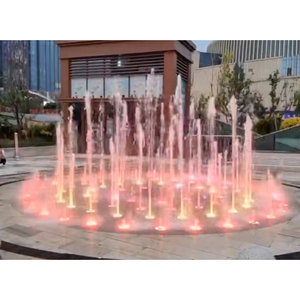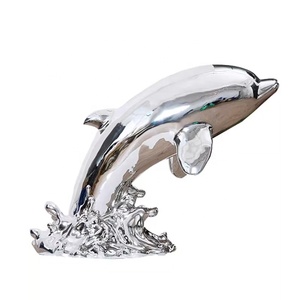(1353 products available)


























































































































































































Fountain plazas are public spaces that feature a prominent water fountain as their central element. These spaces serve as gathering areas, relaxation spots, and attractions for visitors. The fountain can be a static display of water or a dynamic one that changes patterns and colors. Here are the various types of fountain plazas:
Civic Fountain Plaza
A civic fountain plaza is a central gathering space within a city or town. It is a popular site for events that honor the community. The key feature of this plaza is a large fountain that often shoots water high into the air. Surrounding the fountain are areas with benches where people can sit and enjoy the view. The plaza is lined with trees that add a touch of nature and beauty. In addition to the fountain, there are usually sculptures or monuments that hold special meaning for the community. This plaza gets a lot of foot traffic since it's located near important buildings like city halls, libraries, and museums. Overall, a civic fountain plaza serves as a vibrant and meaningful space for the local community.
Memorial Fountain Plaza
A memorial fountain plaza is a special public space that honors important events or people in history. It has a prominent fountain as a key feature, which adds an element of serenity and beauty to the area. Surrounding the fountain are plaques with inscriptions that explain the memorial's significance and details. These plaques serve as educational tools for visitors to learn about the history being commemorated. The plaza is usually landscaped with flowers, trees, and shrubs to create a peaceful and respectful atmosphere. Memorial fountain plazas are important locations for individuals to gather and pay their respects or reflect on the past.
Shopping Mall Fountain Plaza
A shopping mall fountain plaza is a central area within a shopping center that features a prominent fountain as its main attraction. This plaza acts as a gathering spot for shoppers looking to take a break from their shopping activities. The fountain is typically surrounded by benches where people can sit and enjoy the view and the sound of the water. Many shopping mall fountain plazas have additional features like sculptures or live plants that add to the overall atmosphere. Some even include small shops or kiosks nearby so that visitors have the option to purchase snacks or souvenirs. In essence, the shopping mall fountain plaza serves as a vibrant and lively space within the shopping center.
When considering the features of a fountain plaza, it is important to understand the functions of each feature. This helps improve the experience of any user who plans to purchase a fountain plaza.
Water source:
The water source is an important feature of any fountain plaza. It is responsible for the continuous flow of water, ensuring that the fountain is always running. This helps maintain the aesthetic appeal of the fountain plaza and improves the atmosphere around it.
Recirculation system
A recirculation system is a feature common in most fountain plazas. Its main objective is to recycle water, thus minimizing loss. The recirculation system also helps maintain water levels in the fountain. Moreover, it has a pump that controls the water flow, ensuring consistency and stability.
Water features
Water features play a major role in the aesthetics of the fountain. They create an appealing atmosphere and include jets, waterfalls, and streams.
Lighting
Most fountain plazas are well lit. The lighting systems enhance the visual appeal of the fountain plaza, especially at night. Additionally, lighting systems can be customized to create different patterns and effects, making the fountain attractive to tourists.
Filtration system
A filtration system is important for maintaining clean water in the fountain. It removes debris, algae, and other contaminants, thus ensuring the fountain is healthy. This system also ensures the fountain is visually appealing by minimizing the chances of discoloration.
Control system
The control system is the brain of the fountain plaza. It controls the water flow, lighting, and any other features of the fountain. It is also responsible for the customization of water patterns and effects, which improves the experience of anyone visiting the plaza.
Architectural elements
These are unique features that enhance the aesthetics of the fountain. They include sculptures, columns, and tiers. These elements create a visual impact, making the fountain attractive to tourists. Architectural elements are important in elevating the social status of the fountain.
A fountain plaza is a gathering place that has seen amazing changes over the years. From parks to grand public spaces, these plazas have become important parts of our cities. Let's look at some of the scenarios where these fountain plazas are commonly found:
Urban Centers
Fountain plazas are commonly found in urban centers. They serve as public spaces where people can come together and relax. These plazas are also used as venues for public events and activities. Examples of urban fountain plazas include Union Square in San Francisco and Fountain Square in Cincinnati.
Shopping Malls
Many shopping malls have fountain plazas within their premises. The fountain plazas in shopping malls offer shoppers and visitors a place to take a break from shopping. The picturesque views of the plazas also provide a good backdrop for taking photos. Examples of shopping malls with fountain plazas include The Grove in Los Angeles and Westfield Valley Fair in Santa Clara.
Universities and Colleges
Fountain plazas are common in college and university campuses. The plazas serve as central gathering spaces for students, staff, and faculty members. They provide an ideal location for holding events, celebrations, and ceremonies. For instance, the Harvard University campus has a fountain plaza.
Tourist Attractions
Some of the most renowned fountain plazas, such as Piazza Navona and Trafalgar Square, are popular tourist attractions. Tourists visit these plazas to enjoy the beautiful sights and take photos. Besides, other fountain plazas, like the Bellagio in Las Vegas, are famous for their impressive water shows, which attract many visitors.
Size and Scale:
The size of the water feature should match the size and scale of the space it's placed in. A large plaza might need a bigger, more dramatic fountain to fill the space and create the right visual impact. On the flip side, a small plaza could benefit from a more modestly-sized fountain that won't overwhelm the area. Finding the right balance between the fountain's dimensions and the plaza's dimensions is key.
Consider the Surroundings:
When choosing a fountain, it's important to think about its surroundings. Look at the buildings, trees, and other things near where the fountain will go. The fountain should match the style of the nearby things. If the plaza has sleek modern features, a contemporary fountain would fit in nicely. But if there are more traditional elements, a classic-style fountain would be a better choice. Considering how the fountain will harmonize with the other visual elements in the plaza will make for a pleasing overall look.
Materials and Maintenance:
The choice of materials for the fountain can impact how much maintenance it will need. Some materials are easier to take care of than others. When picking a fountain, consider the level of maintenance that will be required and whether that fits the plaza's budget and resources.
Interactivity and Experience:
Think about how people will experience the fountain. Does the plaza want a fountain that people can walk up to and feel the mist from? Or would a fountain that stays more contained and prevents splashing be better? Consider the types of interactions the plaza wants visitors to have with the fountain when choosing one.
Lighting and Visual Appeal:
When choosing a fountain, consider how it will be lit. Proper lighting can make the fountain look really dramatic, especially at night. Think about the visual effects the plaza wants to achieve with the fountain and how lighting can help bring those to life.
Water Flow and Sound:
The way the water flows and the sounds it makes can really change the atmosphere. Gentle trickling might feel more relaxing, while a stronger stream has more energy. Think about the mood the plaza wants to create when choosing the fountain's water dynamics.
Q1: How much does a fountain cost?
A1: The price of a fountain can vary widely depending on size, materials, and complexity. Small, pre-made fountains can start at a few hundred dollars, while large, custom-designed fountains can cost tens of thousands of dollars.
Q2: What maintenance is required for fountains?
A2: Fountains require regular maintenance to keep the water clean and circulating properly. This may include cleaning the fountain, checking and replacing water pump parts, and treating the water with chemicals if necessary.
Q3: Can LED lights be added to a plaza fountain?
A3: Yes, LED lights can be added to most plaza fountains to illuminate the water at night and create dramatic effects. Lighting options should be installed by professionals to ensure safety and waterproofing.
Q4: Are plaza fountains compatible with all climates?
A4: Plaza fountains can be designed for any climate. In colder areas, fountains may need to be drained and covered in winter. In hot climates, water conservation measures can be used. With proper planning, fountains work anywhere.
Q5: Do plaza fountains use a lot of water?
A5: Plaza fountains circulate water continuously, so they don't consume large amounts of water. However, they can lose water to evaporation, especially in hot, dry conditions. Using a fountain that recycles water helps minimize this.